Flitch plate roof rafters to create vaulted ceiling?
Hi all-
A few weeks ago I got some great advice in my general discussion about vaulting a ceiling in a ranch house. One idea that didn’t come up was converting to flitch-plate roof rafters. FHB had an article on this by Michael Chandler several years ago.
The space I’m trying to open up is about 25′ eave-to-eave. Roof pitch is 4 in 12 (maybe 5 in 12), located in SF bay area where snow / wind loads are lower, seismic higher. What experiences do people have using flitch rafters either in a retrofit situation (in my case to remove fink trusses) or where you have the liberty to do a totally-new roof?
Some advantages to this approach vs others as I understand: you avoid needing to have a ridge beam and finding a place to drop supporting posts to solid footing and existing load bearing is largely unchanged. One disadvantage as I understand it is the rafters could be substantial, maybe even pairs of 2×12, so I’m guessing I’d have to have some portion of them being exposed (which can work).
Thoughts?

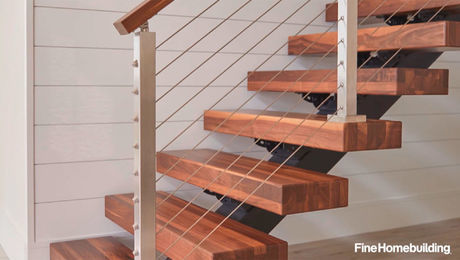
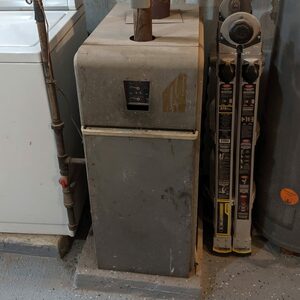
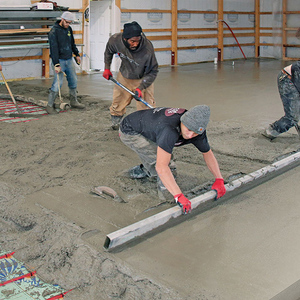
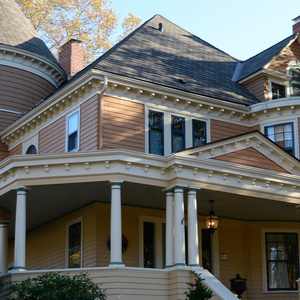
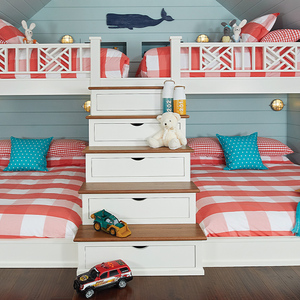







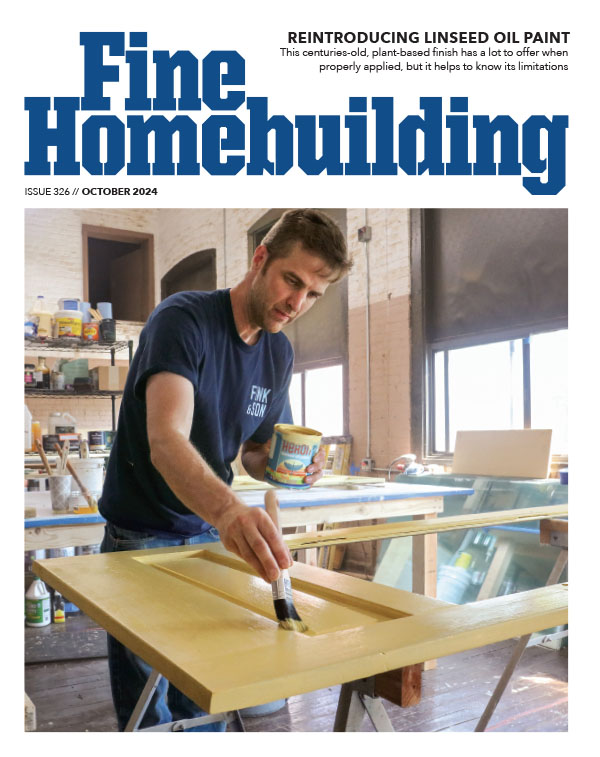





Replies
Sissors Truss
Since you're going to have to remove the trusses one way or another, I'd just replace them with sissors trusses. You can increase the roof pitch to get a higher ceiling pitch if you want.
Challenges with that would be...
a still-new-enough roof section with architectural shingles gets trashed and so there's a cost to build new
that would trigger a design review with planning
tying in new-elevation roof with the rest (there's an L) creates a new thing to solve
house now gets opened up during remodel
Flitch plates are a waste of steel.
Use welded I or H beams or even channels or square tubing and box them in with 1x wood of your choice or just plain paint the steel.
Do recall that FHB article, rolled my eyes then too.
PS: If ya want specifics related to the FHB article, a 3/16" wall, 6x6 steel tube weighs less than a 3/8" x 11.25" flitch memeber and has a slightly higher section modulus.
A couple issues I see with the proposed 'flitch-plate' rafters
- An engineer will be required, and 2x12's are not cheap. I have no doubt this will add up to be more than the cost of a more conventional type of truss.
- even with 2x12 it's not a stellar amount of insulation. It looks like it would be a downgrade compared to your existing insulation.
- this will be a huge disruption. I don't think you could live in the house while the existing trusses were removed and these ones installed.
- It wont be easy to find a contractor willing to do this type of work for a reasonable price. It's a lot of work and liability when there are plenty of easier jobs around.
Overall i agree with a poster from the last thread, it would be cheaper/easier to sell this house and buy one that has the higher ceilings you want. If you are set on changing your existing house, scissor or parallel chord trusses would be the better route. I don't know the layout of your house, but would you consider only replacing some of the existing trusses (such as over the living room/ kitchen area)? You might be able to get an engineer to modify your existing trusses to include a partial vault or studio vault, but again that is a large expense and liability that the engineer might not care to take on.
It's not cheaper to move
The argument that it's cheaper to move makes sense in some cases but really doesn't cut it here, especially with the increased cost of financing (I'll avoid digressing on tax consequences as well) and moving cost. Never mind whether a replacement could be found where other things aren't sacrificed (location, size of garage, yard, view....). The bird in the hand, the devil you know...
If you can't afford what we talked about in the other discussion, you definitely can't afford to hire an engineer who will spec out a large number of steel plates (steel's not as cheap as it used to be), which all then need to be installed along with big rafters. My guess is it's at least $1k more expensive because of the engineer, $1k more expensive because of the steel plates, and $500 more to install it all. The rafters will essentially be the same as what we talked about in the other thread, but instead of a rafter tie of wood, it's a piece of curved steel.
If you can't afford what we talked about in the other discussion, you definitely can't afford to hire an engineer who will spec out a large number of steel plates (steel's not as cheap as it used to be), which all then need to be installed along with big rafters. My guess is it's at least $1k more expensive because of the engineer, $1k more expensive because of the steel plates, and $500 more to install it all. The rafters will essentially be the same as what we talked about in the other thread, but instead of a rafter tie of wood, it's a piece of curved steel.
Sure, but talking about it costs less
Thanks. Just a reminder that I'm trying to kick around all ideas that might make sense. This is the time to be second-guessing not mid-project, right? It's not about what I can afford in the sense that while budget is not unlimited I can afford probably afford ANY of the alternatives under consideration. It's more about what strikes the right balance between duration, cost, final result.
An engineer is going to be involved no matter what and the $1K , $500 line items really need to be put in the "compared to what?" context. A ridge beam that needs header support and dual posts at each end (can't put a post through a hallway or in front of a window) and then footings in crawl space is no cakewalk either. Scissor trusses stitched inside a 4 in 12 roof begs the question "why even bother?". And if you can avoid any visible rafter tying, maybe that's worth some added expense.
This project overall is going to be well over $100K on a house that even now is worth $1.5MM in a place where houses go for $600/sf. I just mention this to suggest that the extravagance of vaulting the ceiling is supported by resale value (no plans to move). And being careless about budget is definitely a way to double the cost, I get it. And yes most home improvement projects that don't add square footage don't pay for themselves.
So far, haven't heard from anybody who's ever actually done this.
I think I get where you're coming from now. With sqft numbers like those I'd suggest tearing off the roof and adding a steeper pitched roof with scissor trusses. Cost wise your increasing the project by the cost of roofing materials, but in the grande scheme of things isn't much. You'll get as steep a cathedral as you like, easier insulation, etc.
On many projects like this you really don't need an engineer - it's rather straightforward to size beams off a chart and in some areas simple calculations are even done for homeowners by a building department employee.
Generally speaking, a vaulted ceiling is a dumb idea. And a retrofit of one even dumber. If you feel you absolutely must to go that way you either do it on the cheap (and watch the ridge sag and the walls bulge out, praying it won't totally collapse), or you spend the big bucks to do it right, including engineering and architectural services.